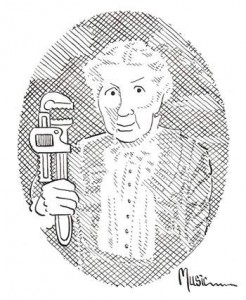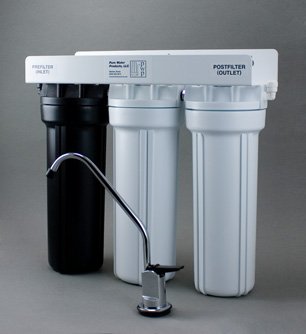Final Barrier Treatment: A Concept that Makes Sense
by Pure Water Annie
The Water Quality Association of America uses the term “final barrier” to describe the practice of doing water treatment at the point where water is actually used. In the case of drinking water, this means providing a “final barrier” of defense at the point where the water is consumed–the kitchen sink, in most homes–rather than attempting to prepare perfect drinking water at a distant water treatment and send it through miles of piping to the point of use.
Only about 1% of the water that leaves the water treatment plant is actually consumed by people; the other 99% is classed as “working water” that waters lawns, washes automobiles, flushes toilets and performs dozens of other tasks that require good quality but not perfect water.
According to the WQA, ” treating 100% of the water in a municipal system to ‘drinking water quality’ and then wasting 99% of that quality through leakage, flushing toilets, watering lawns, fighting fires, is an unsustainable strategy for the future .”
Municipal water departments in advanced countries do an incredible job of turning millions of gallons per day of water from lakes, rivers, and wells into aesthetically acceptable and microbiologically safe water, But to get to the end user, the treated water has to pass through miles of often ancient and always questionable infrastructure where it is subject to ruptured pipes, accidental backflow contamination, corroding metal, and contaminants that are leached from the pipes themselves.
The practical solution is to threat the water immediately before human consumption with a “final barrier” device.
Final barrier devices are by now familiar objects. The most common and reliable are reverse osmosis units, ion exchange devices, carbon filters, and, to an increasing extent, small ultraviolet purifiers.
A high quality undersink filter or reverse osmosis unit can turn tap water into exceptionally high quality drinking water.






